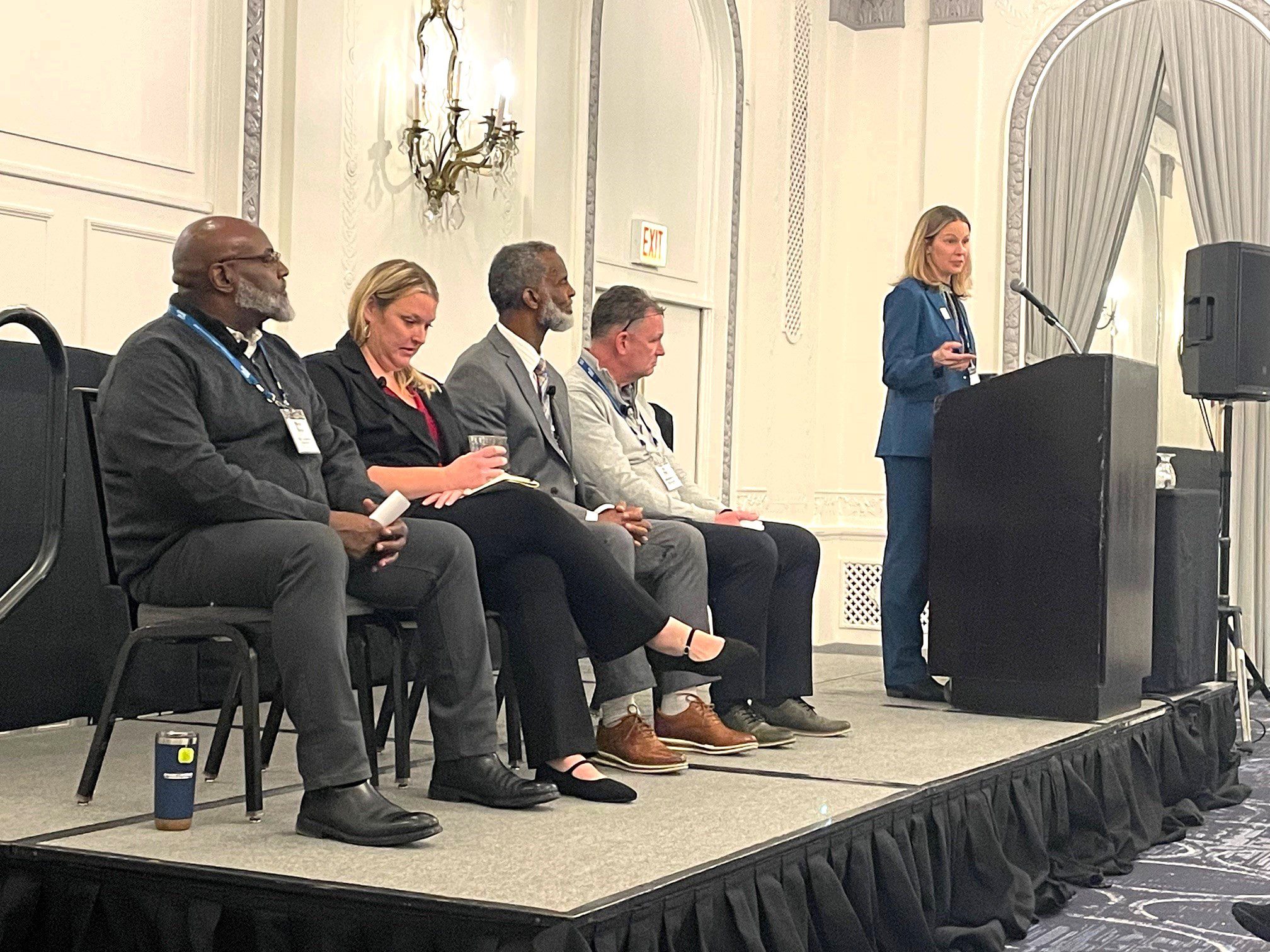Water leaders tackle lead line replacement issues at roundtable
December 11, 2024


AWWA Articles
Water leaders tackle lead line replacement issues at roundtable
With two of history’s most challenging U.S. drinking water regulations recently finalized, more than 120 water utility leaders, consultants and legal experts gathered in Chicago last week to share stories of success and adversity in addressing lead and per- and polyfluoroalkyl substances (PFAS) in their communities.
The AWWA Roundtable, sponsored by CDM Smith, was titled “From Rules to Solutions: LCRI, PFAS & Community Impact.”
“The water community wants to get the lead out – the full lead service line – regardless of the regulation,” AWWA CEO David LaFrance said in a talk during the second day of the event.
To that end, utilities are trying to answer questions of “how” and “how long.” The new Lead and Copper Rule Improvements (LCRI) rule mandates that lead lines be removed in a 10-year timeframe. In a first-day panel on lead service line (LSL) replacement programs, leaders from four water systems described tremendous progress and exacting impediments in replacing LSLs over the past few years.
While many lines are being identified and replaced, utilities often encounter resistance from private property owners who do not wish to address the issue, even if the water system offers to pay.
The question of who controls lead service lines on private property looms large in the LCRI, with the new rule asserting that “Where a water system has access (e.g., legal access, physical access) to conduct full service line replacement, the service line is under its control, and the water system must replace the service line.” In AWWA’s comments on the proposed LCRI, the Association stressed that “control is based on ownership.”
Milwaukee Water Works Superintendent Pat Pauly said his utility is on the long road to replacing approximately 65,000 remaining LSLs, building on seven years of progress since the city’s Common Council passed an ordinance mandating full LSL replacement under certain circumstances. The program initially included a property owner cost-share of 1/3 the private side cost (approximately $1,600) and the water system paying the public side costs.
With help from funds available through the U.S. Infrastructure Investment & Jobs Act (IIJA), Milwaukee grew the program considerably in 2024 and made replacement free to owners of 1-4 unit residential properties that qualified for the replacement program, replacing 2,600 lines. The goal for 2025 is 3,500 lines, but that figure will rise to more than 5,000 annually to meet the U.S. Environmental Protection Agency’s (EPA’s) 10-year timeframe, he explained.
The IIJA funding, which totaled $15 billion over five years, is due to expire after 2026, leaving many utilities scraping for funding to get the job done.
Pauly said the IIJA funding was critical in Milwaukee. “You can get going or accelerate with what’s available,” Pauly said.
Newark, New Jersey, Commissioner Kareem Adeem explained his city had to work around a state ordinance that prohibited improvements on private property with public money. He also described the difficulty of getting buy-in from property owners and tenants who do not trust government. Partnerships with community organizations and trusted community figures were critical.
“Sometimes those community organizations we are at odds with, they’re your friends,” he said.
Chicago Department of Water Management Commissioner Randy Conner stressed the importance of meaningful support from public officials for LSL replacement, adding that he is constantly looking for ways to stretch funding. He noted the importance of having the right staff talking to property owners on behalf of the utility. “If a person is good at coring apples, you don’t hire them to peel an orange,” he said.
A CDM Smith study estimates that LSL replacement will cost at least $12,000 per line nationwide, suggesting the nationwide bill may surpass $100 billion. That figure seemed aligned to projections from panelists. City of Rockford, Illinois, Water Superintendent Jamie Rott estimated the “unit cost” for replacing an LSL in her system to be between $12,000 and $14,000.
The roundtable also featured panels on PFAS remediation, building trust and managing risk, social/community/environmental considerations, legal issues and funding mechanisms.
Advertisement